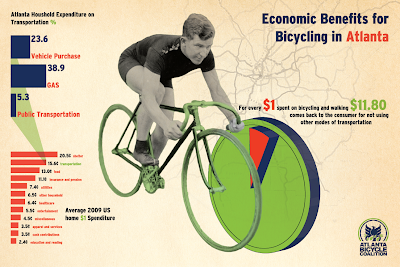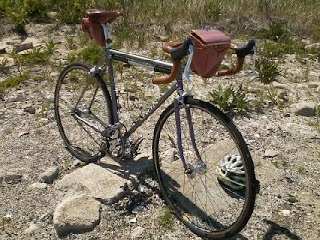People fantasize about the sort of summer afternoon we had today. There was lots of sunshine, very little humidity and practically no clouds as the temperature rose to 30C (86F).
So, of course, I went for a ride. After crossing the bridge into Rockaway Beach, I turned right and rode along rows of serene-looking homes that masked the tragedies the Queens coastal communities of Rockaway Park and Belle Harbor have experienced. Of course, they bore the brunt of Superstorm Sandy, but perhaps survived it a bit better than some other areas.
Eleven years earlier, Flight 587--which had taken off from JFK Airport only two and a half minutes earlier, bound for the Dominican Republic--crashed into the ocean and sent its debris flying into those homes. Although it is the second-deadliest air crash in US history, it has been forgotten, probably because it happened only a few weeks after 11 September.
To see the neighborhood today, one would hardly know--save for a monument on 116th Street--that it had experienced something so horrific. I could say the same for Breezy Point, about four miles to the west on the Rockaway Peninsula. Few areas were more devastated by the storm: In addition to the destruction wrought by the wind, rain and tides, 100 houses burned to the ground in a fire sparked when a storm surge inundated power lines.
Homes, stores and other buildings have been restored and rebuilt. Still , it all looked rather forlorn. Perhaps it had to do with the fact that almost nobody was out and about in spite of the weather.
At least it was all there and I could ride it. And I did--over the bridge to Brooklyn, to Floyd Bennett and Brighton Beach and Coney Island. At least it looked like a summer day at Coney Island, with people swimming and fishing the water, walking, riding and lounging on the boardwalk and eating all of those unhealthy foods sold in boardwalk stands.
Then I rode home, along the promenade that passes along the Verrazano Bridge and up Hipster Hook to my place. I was grateful for another good ride, even if it wasn't long or challenging.
So, of course, I went for a ride. After crossing the bridge into Rockaway Beach, I turned right and rode along rows of serene-looking homes that masked the tragedies the Queens coastal communities of Rockaway Park and Belle Harbor have experienced. Of course, they bore the brunt of Superstorm Sandy, but perhaps survived it a bit better than some other areas.
Eleven years earlier, Flight 587--which had taken off from JFK Airport only two and a half minutes earlier, bound for the Dominican Republic--crashed into the ocean and sent its debris flying into those homes. Although it is the second-deadliest air crash in US history, it has been forgotten, probably because it happened only a few weeks after 11 September.
To see the neighborhood today, one would hardly know--save for a monument on 116th Street--that it had experienced something so horrific. I could say the same for Breezy Point, about four miles to the west on the Rockaway Peninsula. Few areas were more devastated by the storm: In addition to the destruction wrought by the wind, rain and tides, 100 houses burned to the ground in a fire sparked when a storm surge inundated power lines.
Homes, stores and other buildings have been restored and rebuilt. Still , it all looked rather forlorn. Perhaps it had to do with the fact that almost nobody was out and about in spite of the weather.
At least it was all there and I could ride it. And I did--over the bridge to Brooklyn, to Floyd Bennett and Brighton Beach and Coney Island. At least it looked like a summer day at Coney Island, with people swimming and fishing the water, walking, riding and lounging on the boardwalk and eating all of those unhealthy foods sold in boardwalk stands.
Then I rode home, along the promenade that passes along the Verrazano Bridge and up Hipster Hook to my place. I was grateful for another good ride, even if it wasn't long or challenging.













